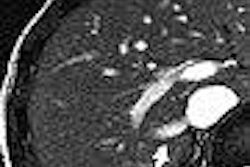As stories go, they won't make the six o'clock news or the local papers, but you can bet they get passed around at conferences. They're part of the vast body of underground news about MRI facility mishaps that everyone knows, but hardly anyone owns up to. I'm talking about the siting problems with MRI machines and vibration.
MRI vibration problems are nothing new. For decades facilities have been suffering through unanticipated headaches, delays, and cost overruns associated with noise and vibrational interference. As magnet systems increase in strength and are presented in a greater array of designs (wide-bore, short-bore, stand-up, open, extremity, and so on), vibrational issues will continue to plague the uninformed, the poorly advised, and the just plain unlucky.
So if the problems with vibration are so persistent and sensitivities are only increasing, why isn't more information about mitigating the risks available?
There are two reasons: First, nobody likes standing up in front of his or her peers and saying, "Boy, did I screw up big time. Let me tell you how." This is as true for hospital administration and technical staff as it is for the architects and engineers. Without a forum to air these problems and issues, learning from others' experiences becomes exceedingly difficult.
Second, buried in the fine print of the vendor siting prerequisites is the requirement that the facility verify that the vibration present is within operational tolerances. Few read the fine print, assigning this responsibility to the owner and their architects, and fewer still understand the consequences.
Before addressing the vibration issue, first we need to break it down to the two main components: vibrational interference and sound transmission. Vibrational interference arises when vibrations from pumps, motors, fans, or other mechanical building components are transmitted through the structure of the building to the MRI magnet room floor.
Sometimes the building can even be a conduit for vibration originating outside, from sources such as trains or road traffic. Sound transmission problems often occur in the reverse: audible noise from the MRI communicated through the building to surrounding spaces disturbing the neighbors.
Vibrational interference can cripple an MRI, turning it into a multimillion dollar paperweight. The vibrational shimmy disrupts the spatial alignment of the patient to the magnet, and can render the scan useless. Sometimes these siting problems are the result of dumb luck, and sometimes they are a failure to plan and test appropriately.
MRI suite locations should always be scrutinized for vibrational interference. Factors to review include the structural system, building height, mechanical systems, and even what happens outside the building. Irrespective of whether a full structural vibration analysis is called for, every proposed MRI suite should minimally be evaluated for these risk factors.
The mirror image of vibrational interference is sound transmission. In this situation, the building and its systems fail to appropriately absorb, dampen, and contain the noise generated by MRI systems.
We all know that the "whish-whoo, whish-whoo" of the vacuum pumps combined with the background hum of the equipment and the slamming gradients make for a loud experience inside the bore of a superconducting magnet. In most facilities the walls, floor, and ceiling of the magnet room attenuate these sounds enough that they don't disturb the neighbors. However, when these standard protections don't work, the noise can be a tremendous nuisance to those in adjoining spaces.
Both problems, regardless of the source, share common root causes: vibration (noise) traveling through building components. Vibrational interference is usually transmitted through the structural skeleton of a building -- think of it as tin cans on a string on a much larger scale.
Sound transmission uses the same pathways, but can also use floors, walls, and air in ducts or holes in walls and floors. Once the vibration is in the building structure, it can travel through all of the columns, beams, floors, and walls.
Just as both problems have common symptoms, they also have similar solutions.
Essentially, to resolve the problem you can either treat the source or treat the multiple pathways. For vibrational interference, finding the source of the disruption may be difficult because the vibration can be conducted to the MRI from a location some distance away. But, once found, it may be relatively straightforward to fix.
For sound problems, finding the source isn't the problem, but figuring out the cure can be. Because MRIs are always on, isolating or significantly soundproofing the MRI by itself is virtually impossible. So, if we don't treat the source, we must look at the pathways. Because of the many possible ways that the sound can be conducted, this often requires an analysis to determine which treatments are likely to have the greatest benefit with the least cost.
Despite the fact that many MRI vendors provide vibration-isolation pads in the mounting of their magnets, this is nowhere close to a guarantee that there won't be vibration problems in your installation. Just as the shock absorbers on your car won't guarantee a smooth ride if you take the family sedan off-road in the mountains, the vibration-isolation pads can't guarantee to remove the possibility of vibrational interference or sound transmission.
What this all comes down to is a recurring theme of proactive solutions compared with retroactive fixes. By assessing and addressing vibrational problems (both transmission and sound) before an MRI is installed, you can resolve problems much more effectively and inexpensively. Once an MRI suite is up and running and adjacent spaces are occupied, solutions can be much more invasive and expensive.
Every facility should have each of the following investigated to assess its risks of vibration problems:
- What type of building structural system is being used
- The height of the building
- The location of the MRI suite within the building
- Proximity of the MRI to roads, subways, airports, helipads, and trains
- Building systems (elevators, pumps, heating, ventilation, and air-conditioning [HVAC] equipment, and so on)
- The MRI manufacturer's vibrational tolerances
- Construction materials and techniques used for the building/suite
- Nearby construction activities
To minimize the risks of vibrational problems, have this information evaluated by someone who understands the consequences to an MRI operation and can help you solve the problems proactively. Doing this can save you months of frustration and significant cost overruns.
By Tobias Gilk
AuntMinnie.com contributing writer
August 2, 2005
Reprinted from www.mri-planning.com by permission of the authors. If you would like more information on any aspect of MR facility design or safety, please contact Robert Junk or Tobias Gilk at Jünk Architects.
Related Reading
Did the MRI community learn from the Colombini tragedy? July 28, 2005
MR safety versus the bottom line: Why safety pays, June 16, 2005
Construction planning outside the MRI suite, June 9, 2005
Part II: Answers to the 10 questions to ask your architect about MRI suite design, April 7, 2005
Part I: 10 questions to ask your architect about MRI suite design, April 5, 2005
Copyright © 2005 Jünk Architects, PC


.fFmgij6Hin.png?auto=compress%2Cformat&fit=crop&h=100&q=70&w=100)





.fFmgij6Hin.png?auto=compress%2Cformat&fit=crop&h=167&q=70&w=250)











